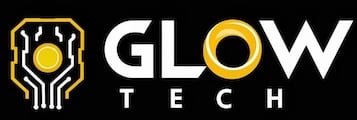
How Building a LEGO Server Can Make You Think Like a CTO
You don’t need a tech degree to start thinking like a CTO. Curiosity, a few tools, and a willingness to mess around — that’s enough. You can even start with something simple like LEGO bricks or pieces from old toys.
Sounds like something for kids? Maybe. But this kind of hands-on building is exactly how a lot of engineers first learned to think in systems. It’s also how you sharpen the kind of thinking leaders in tech use every day. Just like when you download app at crazytime.games — it’s about exploring the rules by playing with them. Building a pretend server out of LEGO works the same way. It’s low-stakes, but the learning is real.
Let’s go through how to build one — and why it matters more than it seems.
Start with the Frame
First, make a box. Use LEGO to build a shell that opens and closes. It doesn’t have to be perfect. Add ports, use wheels or toy gears as fake fans, even wire in a light if you want.
What matters here isn’t the detail. It’s realizing that structure shapes how parts fit and function. That’s something real-world CTOs deal with constantly. The most brilliant software won’t run well if the underlying system is a mess.
Add Some “Guts”
Now fill the inside with parts that represent components. A flat brick? Call it your CPU. A marble? Storage. A bundle of wires? Network cables. Doesn’t matter if it’s literal — what matters is you start thinking in layers.
Try organizing them the way real machines do: memory near processing, airflow from fans to heat zones. You’ll find yourself naturally asking, “Wait, what does this part actually do?”
That’s the kind of curiosity you want to build — not just knowing how things connect, but why.
Model Real Processes
Now, imagine the server’s doing something: loading a webpage, responding to a request, running a script. Use arrows, hand motions, or labeled blocks to show the flow of data.
Moving pieces physically through the system forces your brain to think differently. You’re not just seeing diagrams. You’re walking through the steps. It sticks better, and you’ll start noticing inefficiencies just by watching the path.
This kind of thinking — big picture meets detail — is what helps technical leaders avoid tunnel vision.
Break It and Rebuild
Remove a block. Pretend something’s overheating. Disconnect a cable. What breaks? What keeps working? Now try to fix it.
This kind of “safe failure” trains your brain to think in cause and effect. It also builds confidence in breaking stuff — a trait every good engineer has. You can’t improve a system you’re afraid to touch.
In tech, things go wrong all the time. The people who grow fastest are the ones who treat every crash as a puzzle, not a disaster.

Step Back and Ask Real Questions
Now that you’ve built (and maybe broken) your LEGO server, take a moment to reflect. Not just “Was that fun?” but questions like:
- If I had to explain this setup to someone non-technical, could I?
- What’s missing if this were a real server?
- What happens if traffic doubles? Where’s the weak link?
These are the kinds of questions CTOs ask every day. They’re not just solving problems. They’re thinking ahead, scanning for risk, and aligning technical decisions with long-term plans.
Why It’s Not Just a Toy Project
This kind of building does more than teach tech. It helps you:
- Think in layers, not isolated parts
- Visualize workflows and how they interact
- Communicate complex ideas simply
- Learn by doing instead of just reading
- Stay calm when things stop working
It’s real problem-solving in a low-pressure environment. And if you can build a pretend server, you’re a lot closer to managing a real one than you think.
Real People, Real Origins
Plenty of engineers didn’t come up through formal programs. They started with games, models, hacking old toys, or building stuff just to see if it worked.
- Steve Wozniak cobbled together boards and parts to build what became the Apple I.
- Limor Fried started Adafruit from hands-on experimentation with electronics.
- And many indie developers still prototype ideas using things like cardboard and open-source tools.
They didn’t wait to be told how to start. They just got to work.
One Last Thing
If you’ve never tried something like this, you should. It’s a better intro to system thinking than most online courses. And it’s honestly a lot more fun.
You won’t become a CTO from building a LEGO server — but you’ll start thinking like one. That’s where it begins: not with a title, but with how you see the puzzle.




